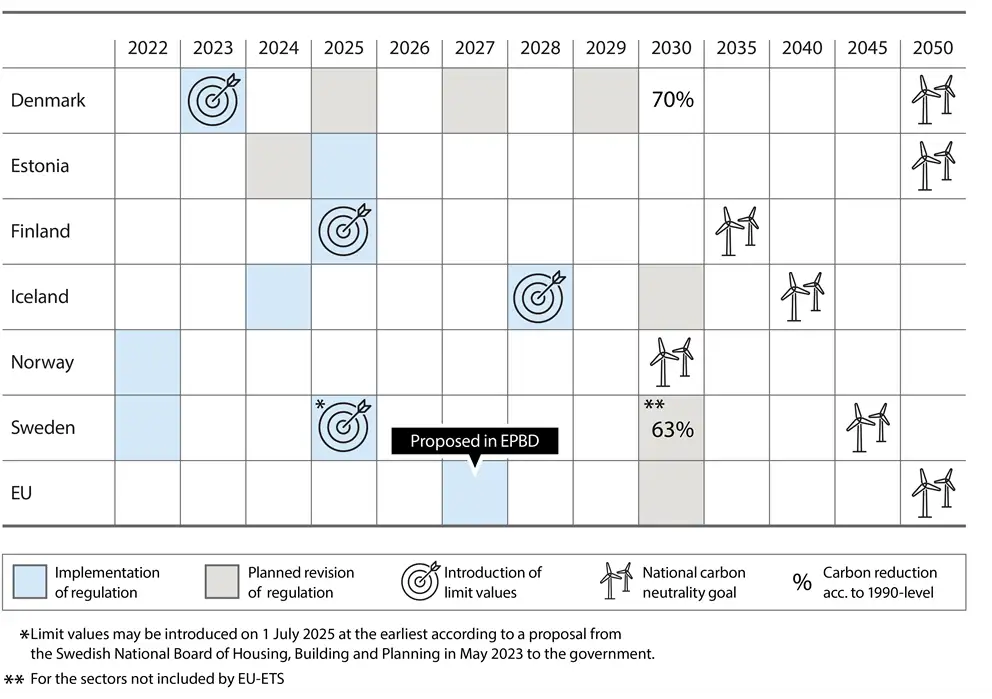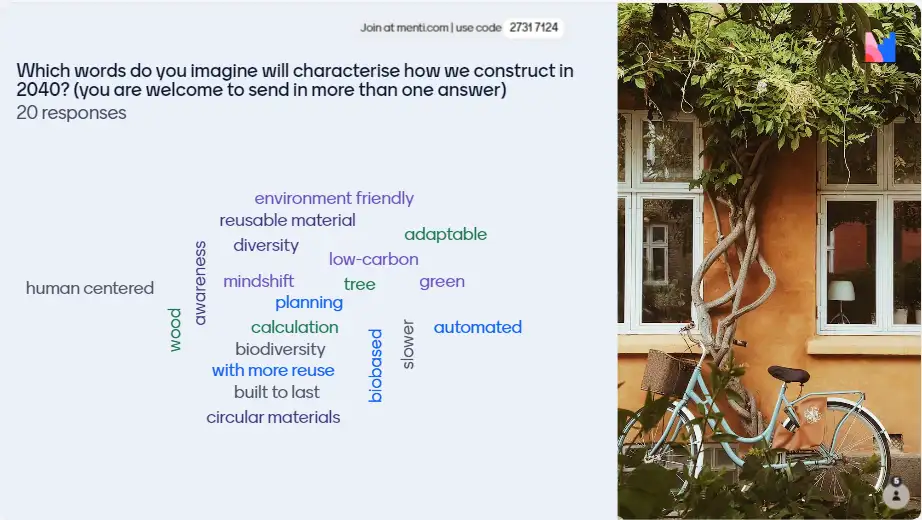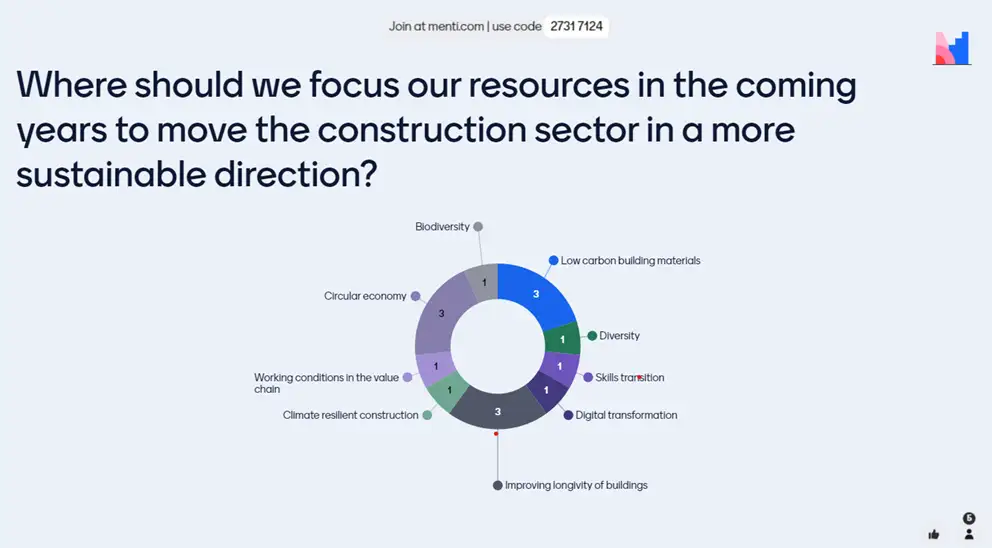The construction industry is rarely perceived as a first mover. However, currently, we see significant changes in the way we plan and build new buildings and in how we maintain and use our existing building stock. A rising demand for green solutions and new legislation results in a need for rapid changes in the building practices.
At COP28 Nordic Sustainable Construction dove into these changes and looked at the future to answer the question: Is the construction sector becoming sustainable?
Milestone in the Paris Agreement
Year 2025 is a milestone in the international collaboration on the Paris agreement to reduce greenhouse gas emissions. According to the agreement, the emissions must peak in the following year and decline towards 2030. COP28 was an opportunity to take a status on the current transitions that work towards this goal.
The Nordic countries have ambitious climate neutrality goals. To reach these goals and a more sustainable future, regulation to limit the climate and environmental impact is either implemented or in the formulation phase. In 2022, Sweden introduced a demand to calculate the climate impact from constructing a new building as the first Nordic country to introduce climate declarations. Norway followed in 2022, introducing a demand for Build for Disassembly. In January 2023, Denmark also implemented a regulation demanding climate declarations and furthermore put a limit on how much CO2 new buildings can emit. The other Nordic countries and Estonia are following that path. Furthermore, the new Energy Performance of Buildings Directive is expected to set demands for whole life carbon calculations across the EU in 2027.

Overview of the regulations being or planned to be implemented in the Nordic countries, the EU and Estonia
In the Nordic Pavilion, Helle Redder Momsen from Nordic Sustainable Construction gathered a panel of experts focusing on the construction sectors’ contribution to reaching the target of the Paris Agreement. The panellists were Simone Mangili, CEO of Carbon Neutral City Alliance, Emily Walport, Senior Materials Engineer at Arup and Raj Kalia, Mission Lead at Dark Matter Labs.
What Transitions are Happening? And How Will we Build in Year 2040?
When asked what the panellists imagined that the construction sector would look like in year 2040, they agreed that the available carbon budget is a central factor to consider. In other words, what we do now, when we build new and how we approach our existing building stock will determine what we can do in the future. There was a consensus in the panel that regulation will play a key role in these considerations, and that carbon budgets are becoming a reality that the construction sector needs to adapt to at a high speed.
However, the panellists also had a positive outlook on the future, mentioning the shifts that are already happening. In year 2040, the panel imagined, that we will see a building practice , with a longer life cycle of new buildings and a new focus on disassembling and reusing the building materials.
The panellists agreed that we are already seeing changes. For instance, Emily Walport pointed out that the design and aesthetic goals are changing, moving away from the idea of the flawless perception on new buildings. At the same time, all panellists mentioned a shift in our approach to the existing building stock. This, they believe, will become of greater value as we look into implementing limits for carbon emissions of buildings.
 During the session the audience – online and physical – answered, which words they imagine will characterise how we construct in 2040. They contributed with these words.
During the session the audience – online and physical – answered, which words they imagine will characterise how we construct in 2040. They contributed with these words.
Bio Based and Reused Materials
One of the most discussed topics in the panel session was the role of building materials in the transition of the construction sector. In their respective companies – Arup, Dark Matter Labs and Carbon Neutral City Alliance – the panellists all work to overcome some of the challenges of using and developing materials to build with a lower climate impact in the future.
The panel agreed, that one of the options to build in a more sustainable way, is to use bio based and other low impact circular materials and solutions. Another necessity is working toward a decarbonisation of our critical construction materials, which will continue to be in demand. The Nordic Blue Building Alliance is working on a report on the possibilities of marine bio based construction materials that will soon be available.
However, with new materials the panellists also identified a rising need for digital innovation and new certifications to ensure the quality and safety of the products. The technical understanding of the materials - their performance and fitting them within existing standards - is a significant challenge.
Can the Solutions Scale?
There was no doubt in the panel that there are still challenges to overcome: Do we have the skills to make a sustainable transition, and can the solutions scale? When asked these questions, the answers were mostly optimistic:
“I am optimistic, scale is beginning to happen. We will not be able to meet our decarbonisation targets if we don’t start to scale rapidly (…) The supply chain needs to come together to understand what the barriers are, and then come up with approaches to overcome them” Emily Walport from Arup said.
“Cities are leading the way implementing innovative solutions. To support these efforts the Carbon Neutral Cities Alliance is currently finishing a handbook for biobased materials. The aim of this handbook is to support cities making policy interventions throughout the lifecycle of buildings, including in the public procurement phase, whether they want to convert, renovate or build new. Importantly, the Building Breakthrough alliance launched today also shows the increased focus on the opportunities to fully decarbonise the built environment”, Simone Mangili from Carbon Neutral City Alliance said
To seek one conclusion of the complex discussions at the panel session would be difficult, but one thing seemed to be a key focus area: In the panel’s view, the circular approach is the paradigm that binds the economic, social and green transitions of the construction sector together. There is not one solutions that fits all. Therefore, we need local and contextual innovations to reach our goals.
 The audience was asked to reflect on, where we should focus our resources in the coming years to move the construction sector in a more sustainable direction. Low carbon building materials, circular economy and improving longevity of buildings were the top 3 answers.
The audience was asked to reflect on, where we should focus our resources in the coming years to move the construction sector in a more sustainable direction. Low carbon building materials, circular economy and improving longevity of buildings were the top 3 answers.
Watch the full panel session in the video here